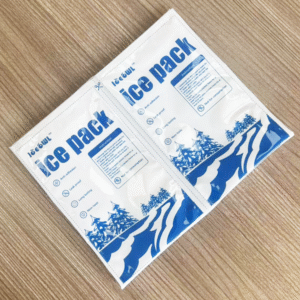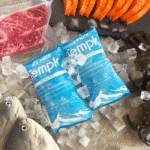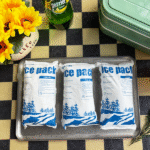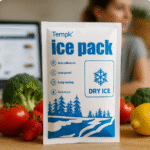How to Buy Dry Ice Ice Packs: A Complete Guide
Looking to buy dry ice ice packs for your shipping needs? This comprehensive guide will walk you through everything you need to know, from selecting the right supplier to understanding the costs involved. Whether you’re shipping temperature-sensitive products or need them for personal use, this article covers all the essentials to ensure you make an informed purchase.
-
How to choose the right dry ice supplier for your needs
-
The factors affecting dry ice pack pricing
-
Best practices for safe handling and storage
-
Alternative options to dry ice ice packs
How to Choose the Right Dry Ice Supplier for Your Needs?
When you’re buying dry ice ice packs, the first step is to choose the right supplier. It’s crucial to select a provider that offers consistent quality and reliable delivery. Look for suppliers with a solid reputation in the industry and one that can accommodate your specific shipping requirements.
How to assess the quality of dry ice ice packs?
The quality of dry ice is essential for maintaining the required temperatures during transit. Dry ice should be pure, solid, and free of contaminants. Make sure to ask your supplier about the production process and quality control measures to ensure the ice packs you receive meet your standards.
-
Check for customer reviews: Reputable suppliers often have feedback from other customers available online, allowing you to gauge their reliability.
-
Inquire about storage capabilities: Some suppliers may offer storage solutions to help extend the life of your dry ice.
-
Confirm availability: Dry ice can sometimes be in limited supply, especially in warmer climates. Ensure your supplier has a steady stock to avoid delays.
Recommended suppliers and their benefits
| Supplier | Product Type | Delivery Time | Customer Rating |
|---|---|---|---|
| Supplier A | Custom Dry Ice Sheets | 24 hours | 4.5/5 |
| Supplier B | Standard Ice Packs | 48 hours | 4.0/5 |
| Supplier C | Bulk Dry Ice | 72 hours | 3.8/5 |
The Factors Affecting Dry Ice Pack Pricing
Understanding the cost of dry ice ice packs can help you make more informed purchasing decisions. The price varies depending on several factors, including the type of dry ice, quantity, and shipping costs.
What makes dry ice pricing fluctuate?
-
Location: Dry ice prices can vary based on your location due to differences in transportation costs and regional demand.
-
Quantity purchased: Larger bulk purchases typically cost less per unit, but you’ll need the storage capacity to handle the larger volume.
-
Type of dry ice: The form of dry ice—whether pellets, blocks, or sheets—can affect the price.
How to save on dry ice purchases?
-
Buy in bulk: Purchasing larger quantities can reduce the overall cost per unit. Many suppliers offer discounts for bulk orders.
-
Order in advance: Some suppliers offer discounts for pre-ordering dry ice ahead of time.
-
Opt for regional suppliers: Purchasing from a local supplier can save on shipping costs, which can significantly add to the price.
Best Practices for Safe Handling and Storage of Dry Ice Ice Packs
Handling and storing dry ice safely is crucial to ensure you and your goods stay safe. Dry ice can cause burns if mishandled, and improper storage can cause sublimation (gas release), leading to dangerous pressure buildup in sealed containers.
How to handle dry ice safely?
-
Wear gloves: Always use insulated gloves when handling dry ice. It can cause severe frostbite if it touches your skin directly.
-
Use in well-ventilated areas: As dry ice sublimates, it releases carbon dioxide, which can be hazardous in confined spaces.
-
Transport in insulated containers: If you’re transporting dry ice, ensure it’s stored in an insulated cooler to slow down sublimation and maintain effectiveness.
How to store dry ice for extended periods?
Dry ice doesn’t last long, and its shelf life depends on the insulation of the storage container. The best way to store dry ice for an extended period is by placing it in a cooler made from thick Styrofoam, which can significantly reduce sublimation rates. Some commercial solutions also offer specially designed storage units.
Alternative Options to Dry Ice Ice Packs
While dry ice is often the go-to solution for temperature-sensitive shipping, it’s not the only option available. Depending on your needs, there are several alternatives that may be more suitable or cost-effective.
Phase-Change Materials (PCMs) vs. Dry Ice
PCMs are substances that absorb and release heat as they change phases (solid to liquid or vice versa). Unlike dry ice, which sublimates and produces gas, PCMs are typically safer and easier to handle for shipping items that need to maintain a certain temperature range without the risk of frostbite or asphyxiation.
Advantages of PCMs:
-
Non-toxic and safe to handle
-
Can be tailored to specific temperature ranges
-
Suitable for longer transit times compared to dry ice
Gel Packs: A Softer Alternative
Gel packs are another option for keeping items cool during transit. They are typically not as cold as dry ice but can be an excellent alternative for shipments that don’t require extreme cold. Gel packs are easier to handle and safer to use, especially for products like pharmaceuticals or perishables that don’t require freezing temperatures.
| Packaging Type | Ideal For | Pros | Cons |
|---|---|---|---|
| Dry Ice | Frozen items | Extremely cold, long-lasting | Risk of burns, need for ventilation |
| PCM | Controlled temperature | No gas release, safer to handle | Limited temperature range |
| Gel Packs | Refrigerated items | Safe, reusable | Not as cold as dry ice |
2025 Trends in Dry Ice and Packaging Solutions
As the world adapts to changing shipping demands, the packaging and cold-chain logistics industry is evolving. Companies are increasingly looking for environmentally friendly solutions, better storage capabilities, and enhanced temperature control.
Latest trends in the dry ice industry:
-
Sustainability: Companies are exploring more sustainable alternatives to dry ice, including biodegradable coolants and reusable packaging.
-
Smart sensors: The integration of smart technology is revolutionizing the way temperature-sensitive products are monitored, ensuring real-time data for both suppliers and customers.
-
Automation: The use of automation in warehouses and shipping hubs is helping streamline the distribution of temperature-sensitive goods.
Market Insights:
With e-commerce booming, the demand for reliable and safe shipping solutions has surged. Customers now expect faster, more efficient, and eco-friendly shipping solutions that don’t compromise on safety or effectiveness.
Common Questions
What is the best option between dry ice and PCM for shipping frozen food?
For shipping frozen food, dry ice is generally the best option due to its extreme cold temperature. However, PCMs may be a better choice for less sensitive goods or items requiring a more consistent temperature range.
How long does dry ice last during shipping?
Dry ice typically lasts for 18-24 hours, depending on the insulation of the container. To extend its lifespan, consider using a high-quality insulated cooler and ordering the dry ice closer to the shipment time.
Conclusion and Recommendations
When choosing to buy dry ice ice packs, it’s important to select a reliable supplier, understand the pricing factors, and ensure safe handling and storage. By following best practices and exploring alternatives like PCMs, you can ensure your items stay cool and safe during transit. Ready to make your purchase? Explore local suppliers and compare prices to find the best solution for your shipping needs.
About Tempk
At Tempk, we specialize in providing high-quality dry ice solutions for the cold chain logistics industry. With a focus on safety, efficiency, and customer satisfaction, we offer reliable shipping options tailored to meet your specific needs. Whether you’re shipping perishables, pharmaceuticals, or other temperature-sensitive goods, Tempk has the right solution for you.
Contact us today to get a quote or learn more about our products!























